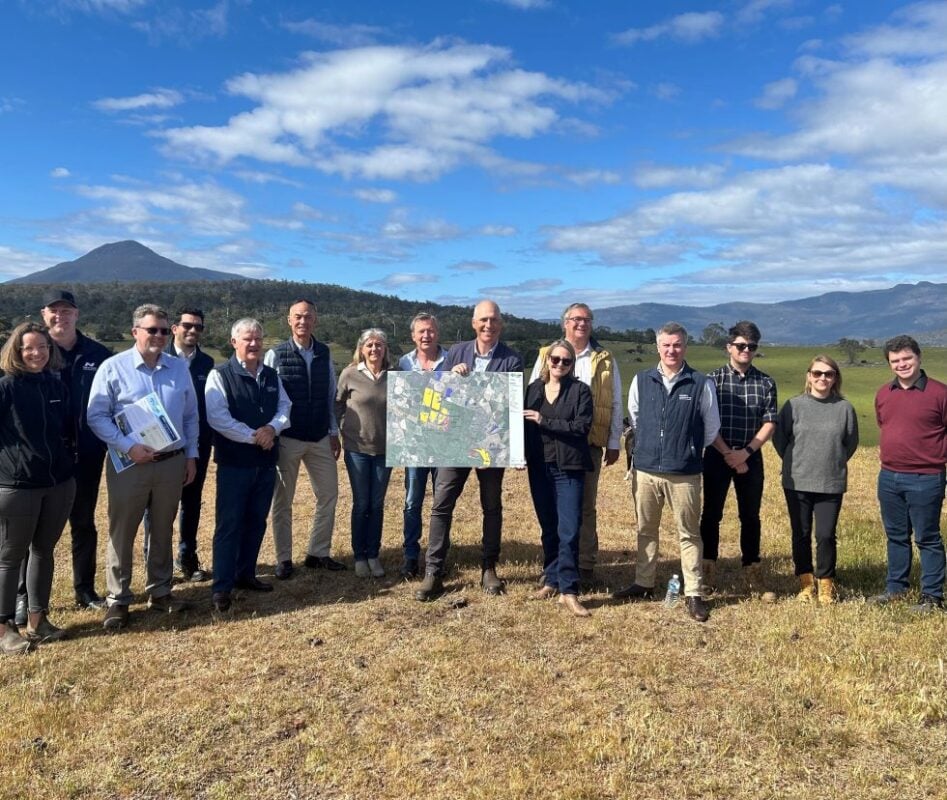
Tasmania’s first utility-scale solar PV project, the 288MW Northern Midlands Solar Farm, is set to be developed after the signing of an offtake agreement with state-owned utility Hydro Tasmania.
Being developed near the state’s second-largest city, Launceston, the developer behind the project, TasRex, has signed a 100% offtake deal with the state-owned utility for the AU$500 million (US$325 million) solar PV plant.
Try Premium for just $1
- Full premium access for the first month at only $1
- Converts to an annual rate after 30 days unless cancelled
- Cancel anytime during the trial period
Premium Benefits
- Expert industry analysis and interviews
- Digital access to PV Tech Power journal
- Exclusive event discounts
Or get the full Premium subscription right away
Or continue reading this article for free
TasRex has also agreed to a partnership with Australian specialist investment manager Birdwood Energy. The firm will support the developer in developing, funding, and delivering the solar PV power plant.
The site will deploy 670,000 solar PV modules over an area of 600 hectares. Supplier deals or technologies are yet to be disclosed.
TasRex CEO Bess Clark said that with local government development approval secured in December 2023 and technical studies well underway, the development was on track for completion by 2027, with construction on course to begin in 2026.
“We are thrilled that Hydro Tasmania has demonstrated its confidence in TasRex and the Northern Midlands Solar Farm through agreeing solar power purchase key terms,” Clark said.
“This transformative project redefines the possibilities for solar energy development in Tasmania and is an important step towards Tasmania’s 200% renewable energy target.”
The construction date will depend on the finalisation of landowner agreements, detailed design, contractor selection, transmission network connection arrangements, and financial arrangements.
It is worth noting that the project is currently on course to become the state’s fourth-largest generation capacity, after the Gordon (450MW) and Poatina (313MW) hydropower stations and the Tamar Valley Power Station, a 388MW gas-fired plant.
Tasmania’s minister for Energy and Renewables, Nick Duigan believes this development is a huge step forward for the state’s renewable energy future.
“This is a significant project that will diversify our state’s renewable energy generation mix and support job creation and economic growth in the local community during the construction and once commissioned,” Duigan said.
Solar PV provides just 1% of Tasmania’s electricity mix
Solar PV generation capacity in the island state of Tasmania has dwindled, currently limited to small-scale projects that provide just 1% of Tasmania’s electricity mix. However, this has not stopped the state from becoming 100% self-sufficient in renewable electricity generation and net zero in six out of the last seven years.
Most of the state’s renewable energy supply comes from hydro generation and storage schemes, with Tasmania holding 27% of Australia’s total freshwater dam storage capacity. Alongside this, the state gains significant contributions from Tasmanian wind farms, which benefit from the ‘Roaring Forties’, an area of the globe that continuously sees strong winds of around 15 to 30 knots all year round.
However, earlier this year, in what was seen as a potential cornerstone moment for large-scale solar PV deployment, the Tasmanian government lifted a ‘speed limit’ measure that has prevented Hydro Tasmania from developing large-scale renewable energy projects, such as solar, without a “cumbersome” Parliamentary process.
The government said that amending the Hydro-Electric Corporation Act 1995 ensures projects over the 40MW threshold can progress without this process. In doing so, Duigan, said this would “unlock new renewable energy generation in Tasmania”, such as solar, wind, and hydro.





